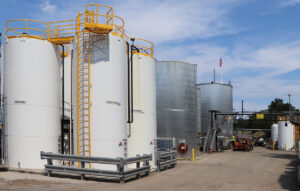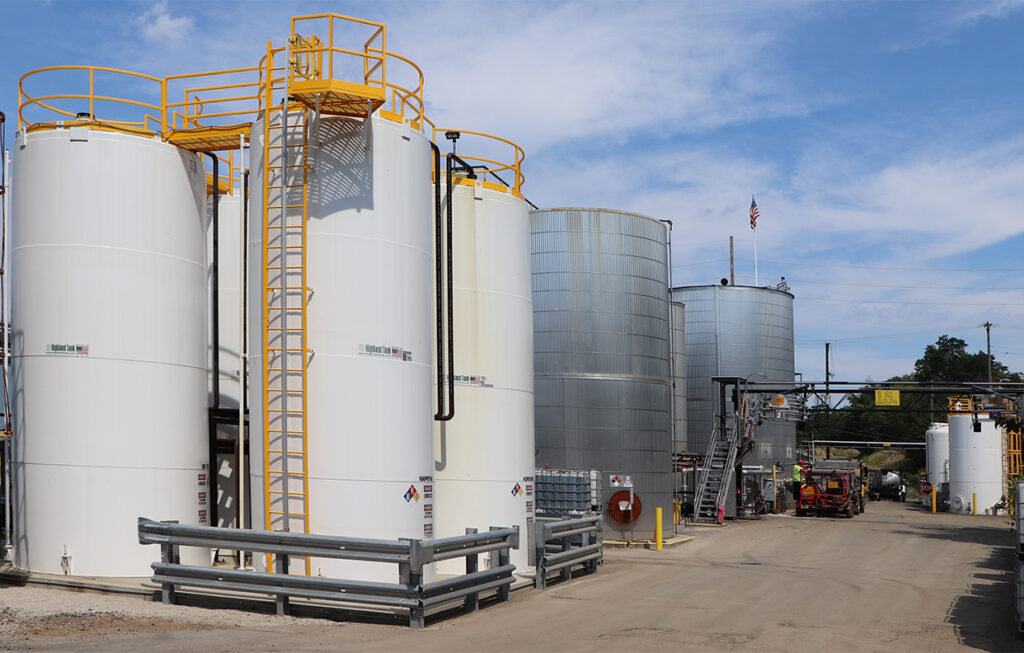If you work in the oil and gas industry, you are likely familiar with API STD 650. This standard, developed by the American Petroleum Institute (API), outlines the requirements for designing, constructing, and maintaining welded steel tanks used for storing oil and other petroleum products.
API STD 650 applies to tanks with a capacity of up to 119,000 gallons (450,000 liters) that are designed for atmospheric pressure, as well as tanks that are designed for pressure that is less than 2.5 pounds per square inch (psi) (17 kPa). It covers tanks that are made of carbon steel, stainless steel, and other materials.
The purpose of API STD 650 is to ensure that the tanks used in the oil and gas industry are designed and constructed in a way that is safe and reliable. The standard provides guidelines for every stage of the tank’s life cycle, from design and construction to operation and maintenance.
Who these are for: Real-world uses for API STD 650: Welded Steel Tanks for Oil Storage
API STD 650: Welded Steel Tanks for Oil Storage is primarily intended for use by engineers, designers, and other professionals involved in the design, construction, and maintenance of aboveground welded steel storage tanks used in the oil and gas industry. This includes individuals and companies involved in the exploration, production, transportation, and storage of petroleum, crude oil, and natural gas.
The standard is also relevant to regulatory agencies, inspectors, and other organizations responsible for ensuring compliance with applicable regulations and standards related to the construction and operation of these storage tanks. In addition, API STD 650 may be useful to manufacturers and suppliers of materials and equipment used in the fabrication and assembly of welded steel tanks for oil storage.
Students, people who need only basic features, and anyone who wants a cheap laptop to use as a second PC.
Why we liked the Google Pixelbook Go!
Here are some key features of API STD 650:
- Tank Design: API STD 650 provides guidelines for designing tanks that are capable of withstanding the stresses and loads that they will be subjected to during their life cycle. This includes guidelines for calculating the thickness of the tank walls, designing the roof and floor, and providing adequate supports and foundations.
- Welding Requirements: API STD 650 outlines the requirements for welding the tank components together, including the types of welding processes that can be used, the qualifications that welders must meet, and the inspection procedures that must be followed.
- Non-Destructive Testing (NDT): The standard requires non-destructive testing of the tank components to ensure that they are free from defects that could compromise the tank’s integrity. This includes radiographic testing, ultrasonic testing, and visual inspection.
- Corrosion Protection: API STD 650 requires tanks to be protected from corrosion, which can cause leaks and other safety hazards. This includes guidelines for selecting the appropriate coating or lining material, as well as guidelines for inspecting and maintaining the coating or lining.
- Inspection and Maintenance: API STD 650 requires tanks to be inspected and maintained on a regular basis to ensure that they are in good working order. This includes guidelines for inspecting the tank’s components, testing the tank’s safety systems, and repairing or replacing any damaged or worn parts.
Overall, API STD 650 is an essential standard for anyone involved in the design, construction, or maintenance of welded steel tanks used for oil storage. By following the guidelines set forth in this standard, oil and gas companies can ensure that their tanks are safe, reliable, and capable of meeting the demands of their industry.
Disclaimer: Prices are at time of the review and subject to change.
Only a quarter of young adults are financially literate. You don’t want to overwhelm them with terrible advice. Best to keep them on track.
JOHN MCCARTHY
Also Read: Journey towards Design Perfection with Google Studio



